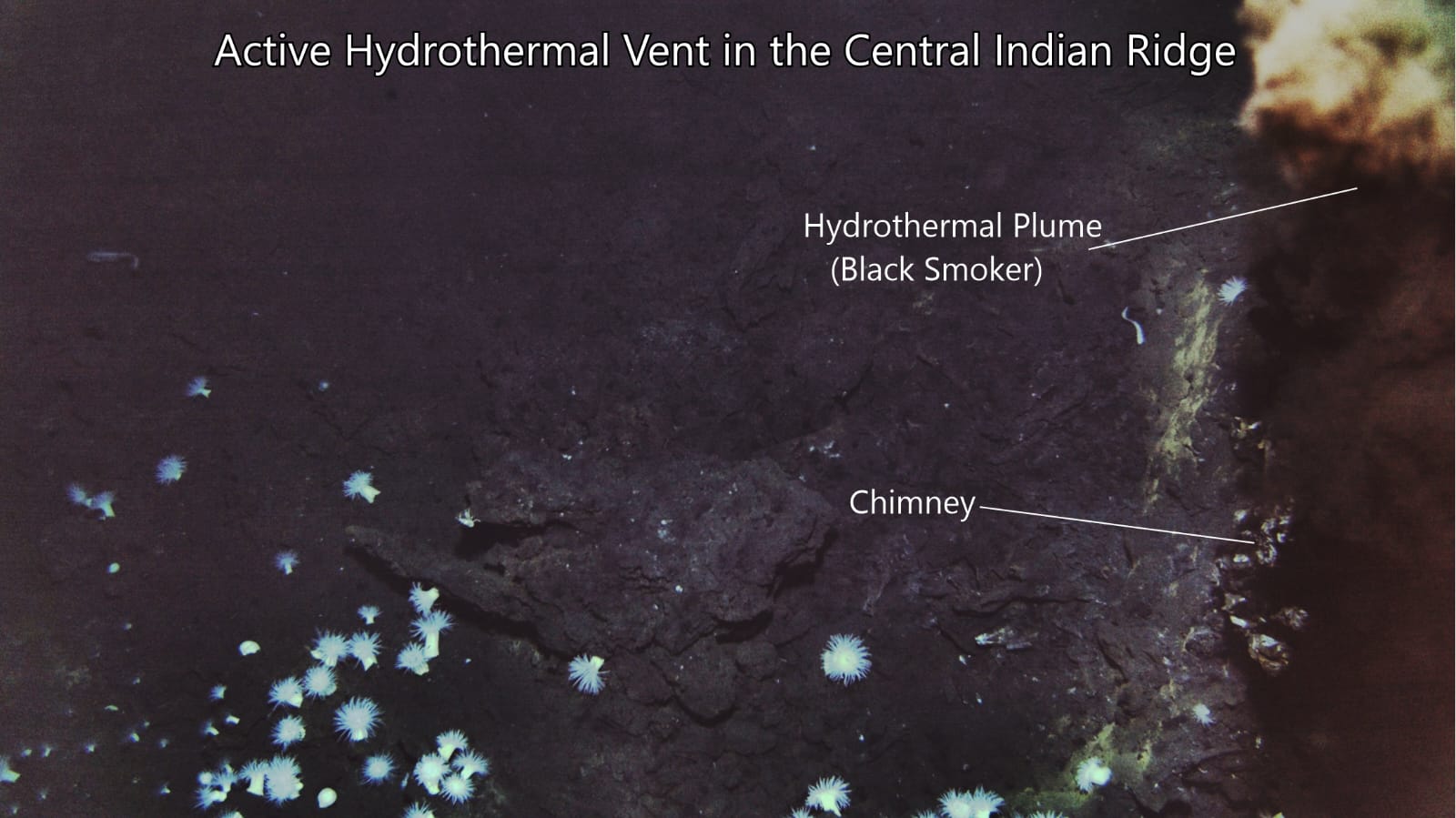Why imaging of underwater hot spring active with microbial life is significant for India’s Deep Ocean Mission
The National Centre for Polar and Ocean Research has performed multiple geophysical surveys along the Central and Southern Ridge of the Indian Ocean since 2012 on the lookout for hydrothermal vents.
 This discovery could significantly enhance India’s Deep Ocean mission, especially the Samudrayaan mission. (Express Photo)
This discovery could significantly enhance India’s Deep Ocean mission, especially the Samudrayaan mission. (Express Photo)In a first, Indian oceanographers have captured the image of an active hydrothermal vent located 4,500 metres below the surface of the Indian Ocean. This site holds potential for mineral exploration as part of the Rs 4,000-crore Deep Ocean Mission under the Ministry of Earth Sciences.
Hydrothermal vents, largely found near tectonic plates, are underwater springs where cold water (about 2 degrees Celsius) prevailing near the seabed comes in close contact with magma (molten rock formed in very hot conditions inside the earth) in a tectonically active region. When this cold water trickles through cracks and fissures on the ocean crust and admixtures with magma, it gets heated up. It can turn into superhot water (up to 370 degrees Celsius) and later emerge as plumes, rich in minerals and gases, through chimneys and vents.
The National Centre for Polar and Ocean Research (NCPOR) in Goa has performed multiple geophysical surveys along the Central and Southern Ridge of the Indian Ocean since 2012 on the lookout for hydrothermal vents. In the process, they look for temperature anomalies and turbidity of water columns along potential areas where hydrothermal vents could be populated.
In April this year, the NCPOR team, assisted by an automatic underwater vehicle (AUV), narrowed their search for a specific site along the Central Indian Ridge. A joint exploration team from NCPOR and the National Institute of Ocean Technology (NIOT) in Chennai carried out the high-resolution imaging. This collaboration focused on high-resolution deep-sea exploration and imaging of hydrothermal sulfide fields at the Central and Southwest Indian Ridges in the Southern Indian Ocean.
Senior scientists John Kurian from NCPOR and NR Ramesh from NIOT led the hydrothermal exploration programme and the AUV campaign. During the recent observation campaign a few days ago, an Indian AUV launched from the research vessel Sagar Nidhi captured a historic image. The observations lasted for 12 to 15 hours.
The deposits from hydrothermal venting are generally rich in copper, zinc, gold, silver, platinum, iron, cobalt, nickel and other economically-beneficial minerals and metals. According to senior NCPOR scientist John Kurian, they could remain active from a few hundred years to as long as 30,000 years, making them vital.
“We could capture images of an active hydrothermal vent. It depicted the vent chimney, black smokers and offered some signs of living chemosynthetic organisms,” John Kurian, group director of Deep Sea Exploration at NCPOR, told The Indian Express.
This discovery could significantly enhance India’s Deep Ocean mission, especially the Samudrayaan mission, focusing on mineral exploration from inactive vents.
 The high resolution image showcasing the hydrothermal vent and the plume. (Credit / NCPOR)
The high resolution image showcasing the hydrothermal vent and the plume. (Credit / NCPOR)
“The latest findings visually confirm our previous detailed near-bottom surveys, which identified several potential locations of active vents through which hot magma fluids coming in contact with the sea bottom were observed. This (discovery) will go a long way to intensify the Indian exploration activities in the deep ocean”, said NCPOR director Thamban Meloth.
Furthermore, this recent discovery could provide scientists with new opportunities to gain better insights into the organisms that inhabit environments supported by hydrothermal vents. Just as land plants utilise sunlight to perform photosynthesis and produce food, underwater microbes rely on chemicals enriched with minerals and metals for their sustenance.
According to Kurian, hydrothermal venting can remain active for a few hundred to as long as 30,000 years. This makes them essential for exploration from both economic and biological perspectives. The deposits formed from hydrothermal venting are believed to be rich in valuable minerals and metals, including copper, zinc, gold, silver, platinum, iron, cobalt, and nickel.
In the next phase of studies, NCPOR plans to conduct TV-guided grab sampling, which could reveal more detailed associated features and the economic potential of these vent deposits.







